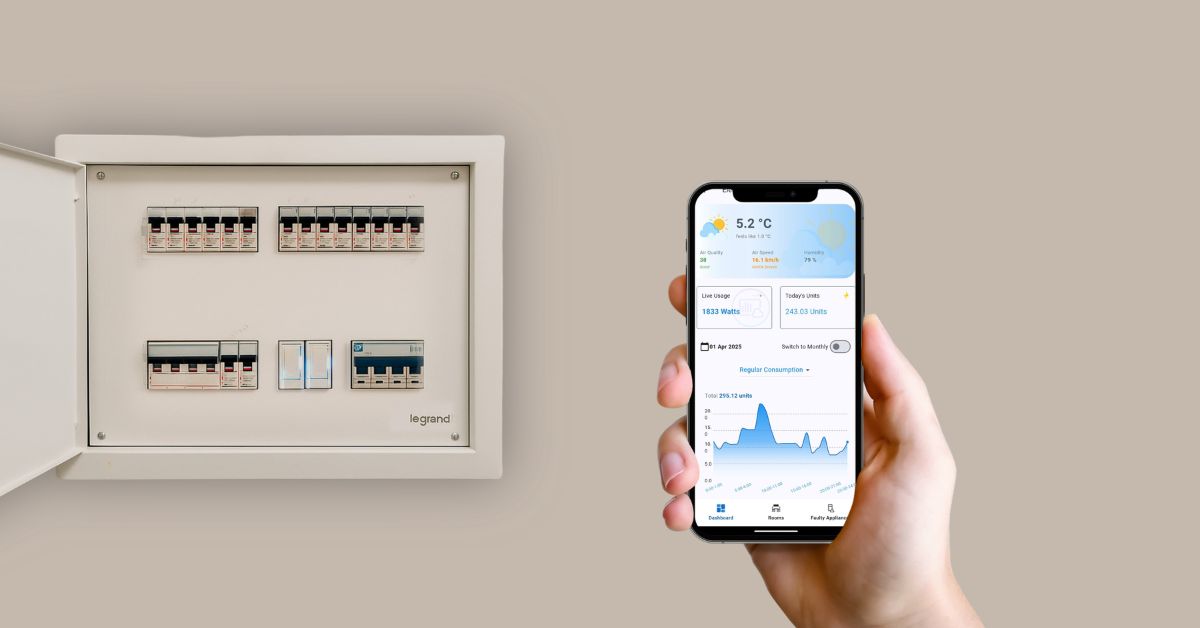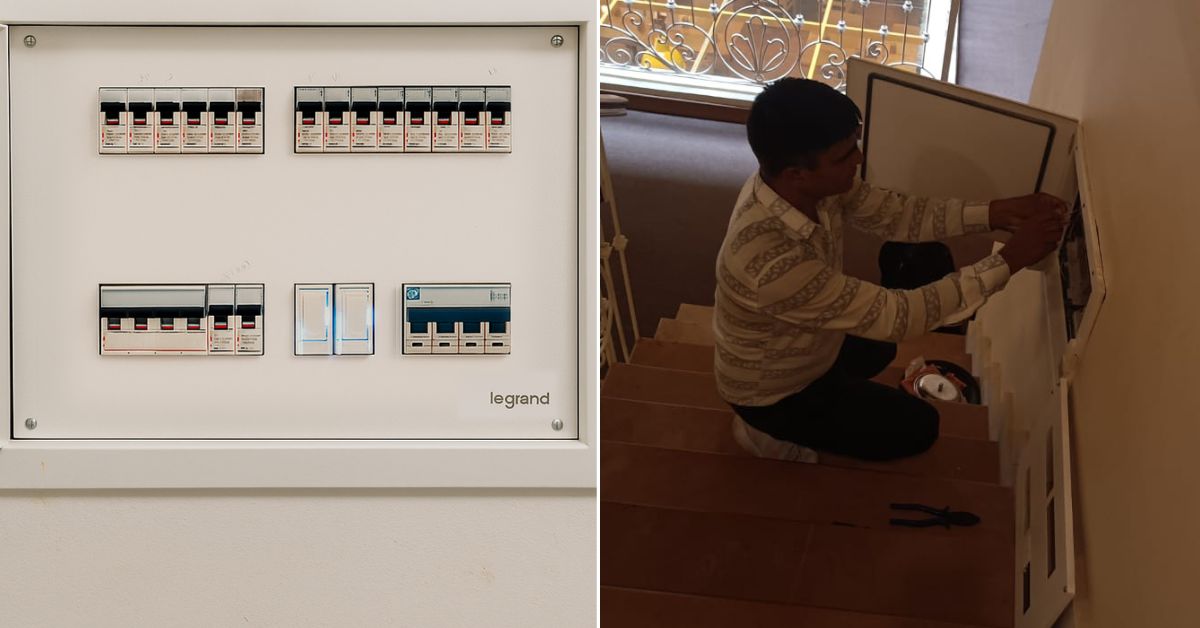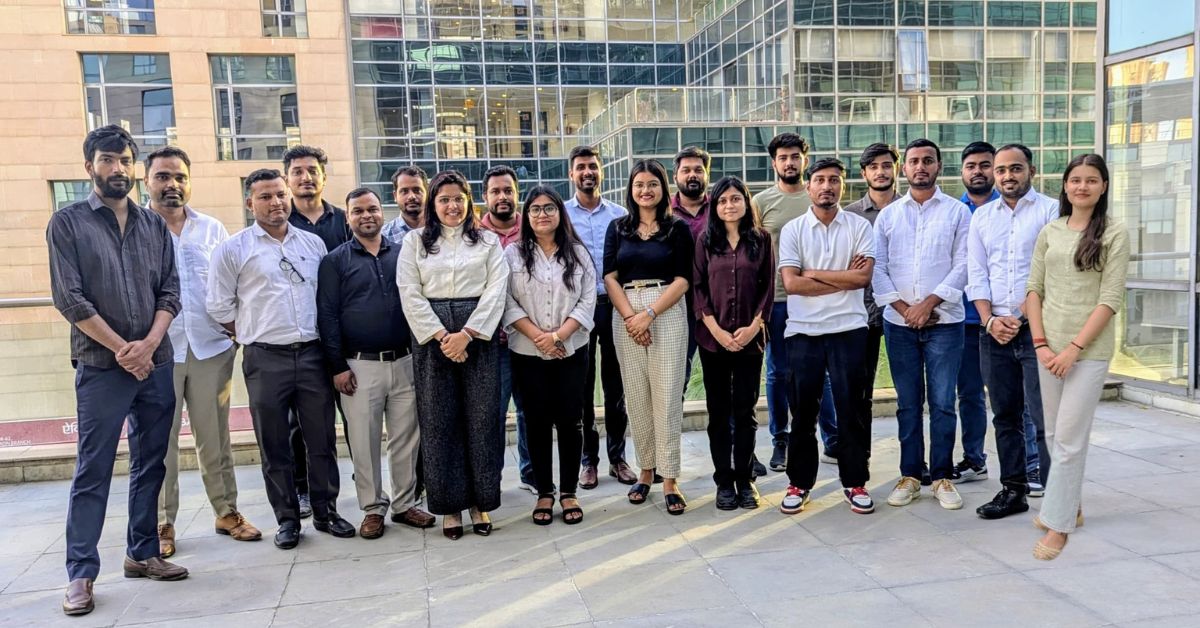This Engineer’s Smart Device Cuts Power Wastage by 23%, Saves Lakhs in Bills
Most of us have grown up hearing our fathers’ familiar reminders: ‘Turn off the lights!’ or ‘Don’t leave the AC running!’. And while that extra fan running in the next room might seem trivial, when scaled across thousands of appliances and systems in homes and businesses, the collective impact becomes staggering.
Data suggests up to 20-30 percent of power consumption in homes is lost due to inefficiencies and outdated infrastructure. This isn’t just a financial concern — it’s a significant environmental one, too. Now, scale that to the level of industries and commercial buildings, and the magnitude of energy wastage becomes massive.
This is something Gurugram-based engineer Bharath Rnkawat noticed while working with businesses facing unpredictable spikes in electricity costs.
“Up to 30 percent of the electricity used by large businesses is wasted. This is not due to negligence but rather a lack of practical monitoring tools that track or optimise consumption,” he says.
“Appliances often draw power needlessly or suffer from silent current leakages. Over time, these inefficiencies escalate, inflating power bills. Many businesses remain unaware of this invisible issue until confronted by an exorbitant bill or power disruptions,” he adds.
Motivated by this challenge, Bharath innovated an advanced system that monitors electricity usage, analyses consumption patterns, detects overuse, and identifies current leakages — all while optimising appliance performance.
 Bharath’s invention reduces electricity waste by monitoring usage and optimising appliance performance in real-time.
Bharath’s invention reduces electricity waste by monitoring usage and optimising appliance performance in real-time.
His patented, real-time device ensures electricity is only used when necessary. For users, this has meant reducing consumption by up to 23 percent.
His startup, Enlog, has already helped over 23,000 users across hotels, commercial offices, retail spaces, and homes. “By automating electricity optimisation, we’ve saved over 4,800 MWh of electricity and cut more than 4,000 tonnes of carbon emissions — that’s enough to power 1,700 Indian homes for a year,” he shares.
We sat down with Bharath to learn how he’s helping India power up more intelligently — and sustainably.
Tackling invisible electricity waste
Bharath, an engineer with extensive experience at prestigious companies like Mercedes-Benz, Ford, and CarDekho, has leveraged his technical expertise to tackle one of the most persistent consumer pain points: high electricity bills caused by inefficient usage.
The idea took root during a casual conversation with his father, who encouraged him to channel his innovation into solving a more personal issue — the reliability of electricity. Having grown up in Fatehabad, Haryana, a region long plagued by frequent power outages, Bharath had witnessed electricity challenges firsthand.
This personal connection, combined with his engineering curiosity, sparked a series of experiments aimed at improving energy efficiency and reducing power wastage. These early efforts laid the foundation for his startup, Enlog, which he launched in 2019.
 Bharath with his co-founders Jharna Saha and Ayush Gupta.
Bharath with his co-founders Jharna Saha and Ayush Gupta.
After years of rigorous research and development, Bharath created a patented device that tackles electricity wastage from all angles — using real-time data, automation, and optimisation to deliver practical, sustainable power savings.
He explains how this innovation works and the key ways it helps households and businesses reduce electricity consumption.
How Enlog works
1) Streamlined installation and use
Bharath’s device is compact, measuring just 40 by 20 mm, and comes in two variants. It can function either as a switch or, with an added calliper, serve as an MCB. Its small size allows it to be easily installed behind existing switchboards or integrated seamlessly into any electrical setup.
2) Automated appliance regulation
The device is first installed at the premises’ main distribution board. Once in place, it automatically regulates appliances to ensure they consume electricity only when needed — turning off those left on unnecessarily and correcting faulty setups that may be causing silent power leakages.
3) Data-driven decision making
The device captures and analyses up to 25,000 data points every second — including current, voltage, power factor, and harmonics. These detailed insights allow the system to identify and correct inefficiencies in electricity usage automatically, without the need for manual intervention.
 The device aids in the precise correction of inefficiencies, such as silent power leakages.
The device aids in the precise correction of inefficiencies, such as silent power leakages.
4) Real-time monitoring and optimisation
The device continuously feeds data to a central server. By analysing this data, the device makes small but significant adjustments that together reduce the overall load on the electricity system.
5) User-specific consumption patterns
By understanding and adjusting to the specific consumption habits of both household and industry users, the device personalises its optimisation strategy to maximise energy savings without impacting user convenience.
“Businesses rely on this automated oversight to save costs while maintaining uninterrupted operations,” adds Bharath.
From households to hotels, Enlog is slashing power bills across India
The technology has wide-ranging applications across hotels, co-living spaces, commercial offices, retail outlets, and homes. Currently, it supports over 23,000 users, collectively helping them save significant amounts of electricity and related costs.
 Enlog has a broad application, spanning hotels, co-living spaces, commercial offices, retail outlets, and homes.
Enlog has a broad application, spanning hotels, co-living spaces, commercial offices, retail outlets, and homes.
One such user is Saurabh Nayak, a Delhi-based entrepreneur who manages around 20 co-living spaces and hotels. A long-time customer of Enlog, Saurabh turned to their power-saving devices about two years ago to tackle rising electricity bills and wastage.
“With Enlog’s metering devices installed, we saw a drastic reduction in energy wastage,” he tells The Better India. “These devices allowed for real-time monitoring, helped identify areas of leakage, and even flagged unnecessary consumption during off-peak hours at night. There were times when people would leave the room with the AC running at 16 degrees.”
The integration of occupancy sensors in hotel rooms, he adds, made a big difference by automatically switching off devices in unoccupied spaces.
“Financially, the impact was substantial. I used to receive power bills of around Rs 10 lakh every month. We now save Rs 1.5 to Rs 2 lakh monthly. I’m extremely happy with the results and often recommend it to industry peers and friends.”
The cost of Enlog’s device varies based on the application and scale. For households, it starts at Rs 2,000. For B2B customers, a typical setup ranges between Rs 20,000 and Rs 25,000, while for large manufacturing units, it can go up to Rs 10–15 lakh. In addition, there’s a monthly subscription fee of Rs 25 for ongoing services and maintenance.
Enlog targets growth through solar tie-ups and new markets
While the company is currently focused on the commercial B2B segment, it plans to expand into the household market as awareness and demand grow. “We aim to eventually offer affordable packages tailored for individual families,” he adds.
 Bharat with his team members.
Bharat with his team members.
For Bharath, every saved kilowatt-hour and every piece of customer feedback fuels his commitment to both environmental sustainability and economic impact.
Over the years, Enlog has also seen strong financial growth. In the last financial year, the startup clocked a revenue of Rs 6 crore and now aims to hit Rs 25 crore in the current fiscal.
But Bharath’s vision goes beyond revenue targets. He is focused on expanding Enlog’s reach and capabilities, including exploring collaborations with solar companies to boost the efficiency of renewable energy systems.
Reflecting on the journey, he shares, “Our approach started at home. Before offering the product to others, I began using it in our own house. My father, who is very conscious about savings, especially appreciated it. By creatively addressing electricity inefficiency on a larger scale now, we’re showing how technology can drive meaningful change — for both society and the planet.”
All images courtesy: Enlog
Sources
News